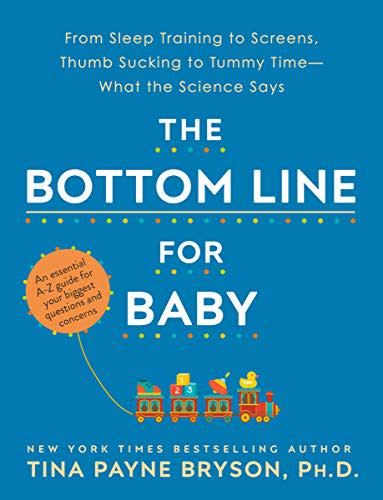A board-certified behavior analyst breaks down what parents should know about their baby’s behavior
Our team is dedicated to finding and telling you more about the products and deals we love. If you love them too and decide to purchase through the links below, we may receive a commission. Pricing and availability are subject to change.
Welcome to In The Know: Milestones, a series for parents, by parents. Hear from experts and learn all about the baby products you need to get through every developmental stage.
Where baby talk and behavior collide, it’s your job to understand what it all means. In this week’s episode of In The Know: Milestones, marriage and family therapist Michelle Tangeman explains how to decipher all the nuances of your little one’s moods and behaviors.
As a board-certified behavior analyst, Tangeman describes her practice as “parental support“ and parental education. As your child’s communication skills develop, Tangeman says it is important to encourage them to point and use other social cues.
Next, she tackles crying. Tangeman admits that crying can be frustrating, but explains that it’s important to pay attention to your child’s crying patterns, particularly at the 10-month mark.
“Crying is the only way that they know how to communicate to you,” Tangeman tells In The Know. “My advice here is to always respond.”
Tangeman explains that crying can be an indication that your little one is tired. However, signs like yawning and not wanting to play can also be an indicator that your child is ready for a pillow.
“In regards to hunger cues,” Tangeman adds, “your child could be kind of heading towards the breasts, or maybe heading towards the bottle, or opening their mouth or sucking on their hands or their lips.”
Additionally, Tangeman advises parents to move away from the idea of “the terrible ones“ and “the terrible twos.“ The years from zero to four is a time of development for your child to gain a sense of independence and understanding of the world.
“There’s this strong need to remain close to the caregiver. They’ve formed a healthy strong attachment to the primary caregiver but at the same time, they’re starting to be able to move, they’re either crawling, they’re walking they’re able to create the space, this distance,” she explains. “What you see is the strong desire to be really close to the caregiver, but at the same time like ‘oh my environment so much bigger. I want to go explore.’”
Tangeman recommends two books that are great for new parents who want to understand baby talk and behavior.
The Bottom Line for Baby: From Sleep Training to Screens, Thumb Sucking to Tummy Time, $13.67-$13.99

The Bottom Line for Baby gives parents the rundown on what to expect in a baby’s first year of life.
Cribsheet, $13.99-$18.49

Cribsheet is a science-based book behind baby behavior for parents who want to understand their little ones on a scientific level.
If you’re still looking for more resources, spend 30 minutes in Tangeman’s video course Toddlerhood: a Declaration of Independence that’s specific for parents with toddlers.
Babies have a lot to understand about the world and with your help and guidance it becomes that much easier.
If you liked this story, you might also enjoy the importance of a child’s playtime.
More from In The Know:
Mom desperately tries to figure out how she got her baby to sleep through the night
A speech therapist shares two books every parent should own to promote language development
Sing Cassie chats with Hannah Bronfman about being pregnant during the pandemic
This yummy smoothie is packed with immune-boosting vitamins
The post A board-certified behavior analyst breaks down what parents should know about their baby’s behavior appeared first on In The Know.
